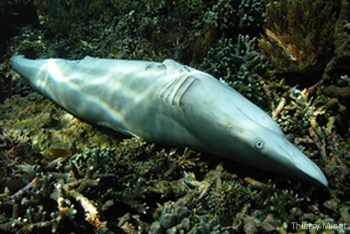
Shark finning is the brutal practice of slicing off a shark’s fins, often for use in shark fin soup, an Asian delicacy. The shark – mostly still alive – is thrown overboard to bleed to death and die of starvation at the bottom of the sea. How do you feel about that?
Shark fin soup was once an Asian delicacy reserved for the wealthy. Yet, with a growing middle class, the soup is more common at weddings, banquets and business meetings.
A bowl can cost up to US $100, making the fins easily the most lucrative part of the shark. Raw shark fins undergo processing by first removing the skin and denticles, then trimming them to shape and bleaching to a desirable color.
Nutritional Value
Interestingly however, the fins themselves are virtually tasteless. The taste comes from the soup, while the fins are of interest for their gelatinous texture. However, vitamin content of typical shark fin soup is much less than that of typical vegetable soup and the fins themselves have no nutritional value.
Worse yet, sharks are on top of the food chain and with increasing ocean contamination, their meat contains ever higher levels of mercury. Mercury is a known reproductive and developmental toxin and one that can cause permanent nerve and brain damage
Shark meat is inferior to other fish and the bodies are bulky and take up precious cargo space. Hence, this brutal practice is hence incredibly wasteful. Shark finning only utilizes 1-5% of the shark’s body weight, removing an essential food source from many communities.
Without the fins, many sharks are unidentifiable, which further impedes management. Estimates suggest that between 26 and 73 million (!) sharks suffer from this practice each year. All for a tasteless and potentially harmful product that translates to “fish wing” and adds nothing more than structure to a broth. Shame.
Some groups, such as Fins Attached, Shark Savers, Shark Angels, Shark Whisperer, Shark Huggers, among others, discourage the consumption of the soup. This is due to concerns with the world’s shark population and how inhumanely sharks are finned alive and tossed back into the ocean, unable to swim, hunt or survive.
Who is Helping How – Asia
The prevalence of shark finning and the sustainability of sharks are both under debate. Others feel targeting the Chinese tradition is sinophobic. Therefore, one way to draw attention to the issue is to involve Chinese celebrities such as Zhang Yue and Yao Ming.
Major hotel operators The Peninsula Hotels and Shangri-La Hotels and Resorts stopped serving shark fin soup.
The three largest supermarket chains in Singapore – Cold Storage, NTUC FairPrice and Carrefour – have stopped selling shark fins as well.
Further, Hong Kong Disneyland dropped the soup from its menu after it could not find a sustainable source.
Finally, the University of Hong Kong banned serving shark fin soup, hoping to give a lead. By the way, Hong Kong is a major hub for the sale of shark fins.
Malaysia’s Natural Resources and Environment Ministry banned shark’s fin soup from official functions in a commitment to the Malaysian Nature Society.
Who is Helping How – Rest of World
In the U.S., Hawaii, Washington, Oregon, California, Guam, and the Commonwealth of the Northern Mariana Islands have banned the sale and possession of shark fins. That effectively eliminated the availability of the soup.
California governor Jerry Brown cited the cruelty of finning and potential threats to the environment and commercial fishing in signing the bill. Unfortunately, opponents charged the ban was discriminatory against Chinese.
Further, Toronto, Canada’s largest city, joined Brantford and Mississauga in adopting a shark fin ban on 13 October 2011. Calgary joined other Canadian cities in banning shark fin soup on 16 July, 2012. On 2 July, 2012, China Government Offices Administration of the State Council also claimed that the soup at official functions will be unavailable shortly.
Have a look at this great infographic to learn more (click to enlarge):
Credit: Excerpts from Oceana, Greenpeace, Wikipedia
Check out our articles on Goblin Shark, Thresher Shark, Whale Shark, Spinner Shark, Bull Shark, Australian Ghost Shark, Longnose Sawshark, Megamouth Shark, The Dilemma of Population Growth
